Laurel And Hardy
 From Nwe
From Nwe Laurel and Hardy were an American-based comedy duo who became famous during the early half of the twentieth century for their work in motion pictures. The the duo consisted of the thin British-born-and-reared Stan Laurel and his heavier American partner from the state of Georgia, Oliver Hardy. They are considered among the most famous and finest double acts in cinema history. Each brought talents from his solo career to the team.
The two comedians worked together briefly in 1919, on The Lucky Dog released in 1921. After a period appearing separately in several short films for the Hal Roach studio during the 1920s, they began appearing together in 1926, and officially became a team in 1927. They became Hal Roach's most famous and lucrative stars. Among their most popular and successful films were the features Sons of the Desert (1933), Way Out West (1937), and Block-Heads (1938); and the shorts Big Business (1929), Helpmates (1932), and their Academy Award-winning effort, The Music Box (1932).
The pair left the Roach studio in 1940, then appeared in eight low-budget comedies for 20th Century Fox and Metro-Goldwyn-Mayer. From 1945 to 1950, they did not appear on film and concentrated on their stage show. They made their last film, Atoll K, in France in 1950-1951, before retiring from the screen. In total they appeared together in 106 films. They starred in 40 short sound films, 32 short silent films, and 23 feature films; in the remaining 11 films they made a guest appearance or had a cameo role.
Before the pairing
Stan Laurel
Stan Laurel (June 16, 1890 – February 23, 1965) was born Arthur Stanley Jefferson in Ulverston, Lancashire (now Ulverston, Cumbria), England. His father, Arthur J. "A.J." Jefferson, was a showman and had served as actor, director, playwright, manager, and all-around theatrical entrepreneur in many northern English cities.
Laurel began his career in the Glasgow Britannia Theatre of Varieties and Panopticon music hall at the age of 16. Over the next several years, he gradually worked his way up the ladder of supporting roles until he became the featured comedian, as well as an understudy to Charlie Chaplin, in Fred Karno's comedy company. He emigrated to America in 1912, where he decided to change his name to Stan Laurel, worrying that "Stanley Jefferson" was too long to fit onto posters.
Laurel made his first film appearance in 1917 (Nuts in May), and continued to make more than 50 other silent films and two-reelers for a variety of producers. He experienced only modest success as a solo movie comedian. Producer Hal Roach later speculated that this was due in part to the difficulty in photographing Laurel's pale blue eyes on early pre-panchromatic film stock, perhaps giving the appearance of blindness. A more basic problem seems to have been his not having an easily marketable screen character, like that of Chaplin, Harold Lloyd, or Buster Keaton.
When Laurel began appearing in satires of popular screen dramas, however, audiences really took notice of him. Between 1922 and 1925, he starred in a number of films including Mud and Sand (a burlesque of Blood and Sand featuring Laurel as "Rhubarb Vaselino") and Dr. Pyckle and Mr. Pryde (in which he played both the genteel doctor and the manic monster). Many of these comedies had crazy visual gags and Stan's eccentric pantomime, establishing the star as an inspired "nut comic."
Oliver Hardy
Oliver Hardy (January 18, 1892 – August 7, 1957) was born Norvell Hardy in Harlem, Georgia, in the United States. Then as he turned 18 he changed his first name to that of his father who had died some years previously. Henceforth calling himself "Oliver Norvell Hardy." He was nicknamed "Babe."
Before Hardy started his film career as a "heavy" actor in the 1914 film, Outwitting Dad, he had been a movie house projectionist and manager at the Palace Theater in Milledgeville, GA. Oliver appeared solo in more than 250 silent short films. Due to a studio fire, only approximately 100 of these films still exist.
Hardy was a trained singer, and often enjoyed performing for those on the set as well as singing in his own movies.
History of the Laurel and Hardy team
The Hal Roach years
The first film encounter of the two comedians took place in The Lucky Dog, produced in 1919, by Sun-Lite Pictures and released in 1921. Several years later, both men appeared in the Hal Roach production 45 Minutes from Hollywood (1926). Their first "official" film together was The Second Hundred Years (June 1927), directed by Fred Guiol and supervised by Leo McCarey, who suggested that the performers be teamed permanently.
Hal Roach kept them a team for the next decade, making silent shorts, talkie shorts, and feature films. While most silent-film actors saw their careers decline with the advent of sound, Laurel and Hardy made a successful transition in 1929, with the short Unaccustomed As We Are. Laurel's English accent and Hardy's Southern American accent and singing brought new dimensions to their characters. The team also proved skillful in their melding of visual and verbal humor, adding dialogs that served to enhance rather than replace their popular sight gags.
Laurel and Hardy's shorts were among the most successful in the business. In 1931, Laurel and Hardy made the first feature film in which they were the stars, Pardon Us. Following the success of this film, the duo reduced the number of shorts they made in order to concentrate on feature films. Future Laurel and Hardy features included Pack Up Your Troubles (1932), Fra Diavolo (or The Devil's Brother, 1933), Sons of the Desert (1933), and Babes in Toyland (1934). Laurel and Hardy made the classic short The Music Box in 1932, which won the first Academy Award for Best Short Subject, Comedy.
Because the popularity of the double feature diminished the demand for short subjects, Hal Roach canceled most of his short movies, and the final short in the Laurel and Hardy series was 1935's Thicker than Water. The duo's subsequent feature films included Bonnie Scotland (1935), The Bohemian Girl (1936), Our Relations (1936), Way Out West (1937) (which includes the famous song "Trail of the Lonesome Pine"), Swiss Miss (1938), and Block-Heads (1938).
Style of comedy and notable routines
The humor of Laurel and Hardy was generally visual, but based on character development with slapstick used for emphasis. Their physical tête-à-têtes are quite complex, which is part of what sets them above other comics. Their very characters and their relationship prevent them from not only achieving their goals, but from even getting started.
Much of their comedy involves a process they referred to as "milking," where a simple idea is used as the basis from which to build several gags. Many of their films have extended sequences constructed around simply featuring the types of problems the pair can cause for themselves in a given situation, without following a strict or set narrative.
In some cases, the comedy bordered on surreal "white magic." For example, Laurel might light his pipe by flicking his thumb upward from his clenched fist as if he held a cigarette lighter. His thumb would ignite, and he would light his pipe. Hardy, seeing this, would attempt to duplicate it. When, after many attempts he actually would achieve the same effect, he would be surprised to discover that his thumb was actually burning, and would cry in pain and hastily blow it out.
A famous routine the team often performed was a bizarre kind of "tit-for-tat" fight with an opponent. In the basic scenario, the fight began when Laurel and Hardy damaged someone else's property by accident. The injured party retaliated by ruining something on Laurel's or Hardy's persons. Stan and Ollie would calmly survey the damage and find something else to vandalize, with the enemy observing quietly until it was his turn to wreck something. The action escalated until both sides were simultaneously destroying property in front of each other. An early example is L & H's silent classic, Big Business (1929), which was placed with the Library of Congress as a national treasure in 1992.
On-screen characterizations
The Laurel and Hardy on-screen characters are of two supremely brainless, eternally optimistic men, almost brave in their perpetual and impregnable innocence. Their humor is physical, but their accident-prone buffoonery is distinguished by the stars' friendly, kindly personalities and their devotion to each other. Stan and Ollie are children in a grown-up world: A skinny-and-fat pair of life's innocent bystanders who always run afoul of irate landlords, pompous citizens, angry policemen, domineering women, antagonistic customers, and apoplectic bosses. If Oliver has found the source of The Problem of Suffering in his life, "That's another fine mess you've gotten me into,", and if Stan's existential crisis is often mirrored in his partner, nevertheless love and friendship are seen to trump all.
Laurel and Hardy had an inbuilt physical contrariety to aid them, and they enhanced this ludicrousness with little touches, being very careful never to desert reality. Stan kept his hair short on the sides and back, but let it grow long on top to create a natural "fright wig" through his inveterate gesture of scratching his head at moments of shock or wonderment and simultaneously pulling up his hair. To achieve a flat-footed walk, he removed the heels from his shoes (usually Army shoes). When talking with Ollie, he would frequently look at his partner's forehead instead of his eyes, enhancing his out-of-this-world coloration.
Inescapably, the ideogram for Laurel and Hardy is a pair of bowler hats. The quasi-British formality of this headgear is in perfect consonance with their bone-bred politeness. Whatever else they are, they are gentlemen—"Mr. Laurel and Mr. Hardy."
Part of Laurel and Hardy's on-screen appearance called for their faces to be filmed flat, without any shadows or dramatic lighting. To recall the traditional appearance of clowns, both comedians wore a light pancake makeup on their faces, and Roach's cameramen, such as Art Lloyd and Francis Corby, were instructed to light and film a scene so that facial lines and wrinkles would be "washed out." Art Lloyd was once quoted as saying, "Well, I'll never win an Oscar, but I'll sure please Stan Laurel."
Off-screen, Laurel and Hardy were the opposite of their movie characters: Laurel was the idea man, while Hardy was more easygoing. Although Hal Roach employed writers and directors such as H.M. Walker, Leo McCarey, James Parrott, James W. Horne, and others on Laurel and Hardy films, somewhere between 25 and 95 percent of each was reworked by Stan Laurel on his own. Laurel would rewrite entire sequences or scripts, have the cast and crew improvise on the soundstage, and meticulously review the footage for editing, often moonlighting to achieve all of these tasks. While Hardy also made contributions to the routines, he was content to follow Laurel's lead and spent most of his free time on hobbies such as golf.
Later feature films
By 1936, although the relationship between Laurel and Hardy remained strong, Laurel's dealings with producer Roach became strained amid a tangle of artistic differences. Roach insisted that his feature-length comedies should also contain musical numbers and/or subplots. (Roach always contended that if you watched any comedian for an hour at a time, "you'd be bored to hell with him.") Laurel maintained that such padding distracted from the team's comedy. History has certainly proved Laurel right: The weakest of their films are the ones possessing the most baggage, while the best are those that unblinkingly focus on Stan and Ollie. Because of this friction, extended stand-off periods became common during the late 1930s, with Roach occasionally threatening to pair Hardy with someone else (he kept them under separate contracts). Laurel and Hardy made two more films, A Chump at Oxford (1940) and Saps at Sea (1940) that Roach released through United Artists.
Hoping for greater artistic freedom, the pair split with Roach and signed with major studios 20th Century Fox and Metro-Goldwyn-Mayer. However, the working conditions were now completely different: They were hired only as actors, relegated to the B-film divisions, and initially not allowed to improvise or contribute to the scripts. When the films proved popular, the studios gave the team more input, and Laurel and Hardy made a total of eight features through 1944. These films, if not the team's best, were extremely successful at the box office.
In 1941, Laurel and Hardy filmed a silent sequence as a public service for the Department of Agriculture; this footage was incorporated into the U.S. Government short, The Tree In a Test Tube (1943). The duo demonstrated the uses of wood, especially as part of the war effort. The most remarkable thing about the film, narrated by MGM's Pete Smith, was that it was filmed in Kodachrome, only the second of their films to be shot in color. (There are also color home movies of Laurel and Hardy, some of which have been included in video releases of their Hal Roach films.)
In 1949, when Laurel was temporarily unable to work because of illness, Oliver Hardy made two solo appearances with his partner's blessings. He played the comic sidekick to John Wayne in Republic's The Fighting Kentuckian. Then, Frank Capra cast him as a racetrack gambler in an uncredited appearance in Riding High, starring Bing Crosby.
After spending the rest of the 1940s performing on stage in Europe, Laurel and Hardy made one final film together in 1950. Atoll K (also known as Utopia) was a French-Italian co-production directed by Leo Joannon, which was plagued by language barriers, production problems, and Stan Laurel's grave health during shooting. Although the film contained some clever visual humor, its muddled storyline and bad voice dubbing worked against its success. The film brought an end to Laurel and Hardy's film careers.
Final years
After Atoll K, Laurel and Hardy took several months off, so that Laurel could recuperate. Upon their return to the European stage, Laurel and Hardy undertook a successful series of public appearances in short sketches Laurel had written: "A Spot of Trouble" (in 1952) and "Birds of a Feather" (in 1953).
Laurel & Hardy returned to the United States in 1954. On December 1, 1954, the team made their only American television appearance, surprised by Ralph Edwards on his live NBC-TV program, This Is Your Life. An audible gasp went up from the studio audience when they were introduced, since—unlike Europeans—many were unaware that they were still alive and well. By the mid-1950s, partly due to the positive response from the television broadcast, the pair was negotiating again with Hal Roach for a series of NBC television specials (in color) to be called Laurel & Hardy's Fabulous Fables. However, plans for the specials were shelved, as the aging comedians suffered from declining health.
In 1955, Stan Laurel and Oliver Hardy made their final public appearance together, taking part in a BBC television program about the Grand Order of Water Rats, the British variety organization. It was titled "This is Music Hall." Laurel and Hardy provide a filmed insert during which they reminisce about their friends in British variety. They conclude with thanks and a fond goodbye to their fans. Neither would have known this to be their farewell appearance, but there could have been none more appropriate.
Under doctor's orders to improve a heart condition, Hardy lost over 100 pounds in 1956. However, he suffered several strokes—some say partly due to the rapid weight loss—and died of a major stroke on August 7, 1957. Longtime friend Bob Chatterton said Hardy only weighed 138 pounds at the end. A depressed Laurel did not attend his partner's funeral, due to his own ill health, explaining his absence with the line "Babe would understand." Had Oliver Hardy lived only a short while longer, he would have seen the triumphant return of Laurel & Hardy to movie theaters, in the Robert Youngson silent-film compilation The Golden Age of Comedy.
For the remaining eight years of his life, Stan Laurel refused to perform, even turning down Stanley Kramer's offer to make a cameo in his landmark 1963 movie, It's a Mad, Mad, Mad, Mad World. In 1960, Laurel was given a special Academy Award for his contributions to film comedy; he was invited to appear at the ceremonies but declined; when he received the statuette, he immediately dubbed it "Mr. Clean" since he was an avid television viewer and familiar with the popular commercials for the cleaning product.
Despite not appearing on-screen after Hardy's death, Laurel did contribute gags to several comedy filmmakers. Most of his writing was in the form of correspondence; he insisted on answering every fan letter personally, and his typewritten responses are highly prized souvenirs today. Late in life, he hosted many visitors of the new generation at his modest seaside apartment, including Dick Cavett, Jerry Lewis, and Dick Van Dyke. Van Dyke (who became a great friend of Laurel) did an imitation of Stan on his television show in 1963, which Laurel saw and wrote—much to Van Dyke's amusement—a lengthy set of "tips" to perfect the imitation. Laurel would live until 1965, surviving to see the duo's work rediscovered through television and classic film revivals. He died in Santa Monica, and is buried at Forest Lawn-Hollywood Hills in Los Angeles, California.
Legacy
Laurel and Hardy were the greatest comedy duo in the Golden Age of Hollywood. Their mischievous style won appreciative movie audiences during five decades. Virtually all of the Laurel and Hardy films survive, and have never gone out of circulation permanently.
- After Stan Laurel's death in 1965, they received two major motion-picture tributes: Laurel and Hardy's Laughing '20s, Robert Youngson's affectionate compilation of the team's silent-film highlights; and The Great Race, a large-scale salute to slapstick that director Blake Edwards dedicated to "Mr. Laurel and Mr. Hardy."
- There are two Laurel and Hardy museums, each in the comedians' respective birthplaces of Ulverston, Lancashire and Harlem, Georgia.
- In a 2005 poll, The Comedian's Comedian, the duo was voted the seventh-greatest comedy act ever by fellow comedians and comedy insiders, making them the most popular double act on the list.
- The catchphrase most associated with Laurel and Hardy is "Well, there's another fine mess you've gotten me into." The phrase has passed into common language usage and means to blame a partner for causing both people an avoidable problem. This phrase is a misquote and Ollie actually says "Well, here's another nice mess you've gotten me into." The phrase was first used in their 1930 film, The Laurel-Hardy Murder Case and Another Fine Mess was the title of one of their short films released later that year.
- Laurel and Hardy were among the crowd of famous people and celebrities pictured on the Beatles' masterpiece LP Sergeant Pepper's Lonely Hearts Club Band.
- Public showings of Laurel and Hardy films have become a staple for film festivals over the years, which continues to this day.
- The official Laurel and Hardy appreciation society is known as "The Sons of the Desert," after a fraternal society in the 1933 film Sons of the Desert. It was founded in New York in 1965 by Laurel and Hardy biographer John McCabe, with the sanction of Stan Laurel. Since the group's inception well over 100 chapters of the organization have formed across North America, Europe, and Australia.
References
ISBN links support NWE through referral fees
- Everson, William K. The Complete Films of Laurel and Hardy. Citadel Press, 1967. ISBN 0-8065-0146-4
- Harness, Kyp. The Art of Laurel and Hardy: Graceful Calamity in the Films. McFarland & Company, 2006. ISBN 0-78642-440-0
- Louvish, Simon. Stan and Ollie: The Roots of Comedy. Faber and Faber, 2001. ISBN 0-571-21590-4
- McCabe, John. Mr. Laurel and Mr. Hardy: An Affectionate Biography. Robson Press, 1961. ISBN 1-86105-606-0
- Skretvedt, Randy. Laurel and Hardy: The Magic behind the Movies, Past Times. 1996. ISBN 0-940410-29-X
- Stone, Rob. Laurel or Hardy: The Solo Films of Stan Laurel and Oliver Hardy. Split Reel, 1996. ISBN 0-965238-407
External links
All links retrieved October 25, 2022.
- The official Laurel and Hardy website. www.laurel-and-hardy.com.
- Pratfall. www.wayoutwest.org.
Credits
New World Encyclopedia writers and editors rewrote and completed the Wikipedia article in accordance with New World Encyclopedia standards. This article abides by terms of the Creative Commons CC-by-sa 3.0 License (CC-by-sa), which may be used and disseminated with proper attribution. Credit is due under the terms of this license that can reference both the New World Encyclopedia contributors and the selfless volunteer contributors of the Wikimedia Foundation. To cite this article click here for a list of acceptable citing formats.The history of earlier contributions by wikipedians is accessible to researchers here:
The history of this article since it was imported to New World Encyclopedia:
Note: Some restrictions may apply to use of individual images which are separately licensed.
↧ Download as ZWI file | Last modified: 02/04/2023 00:51:08 | 5 views
☰ Source: https://www.newworldencyclopedia.org/entry/Laurel_and_Hardy | License: CC BY-SA 3.0
 ZWI signed:
ZWI signed: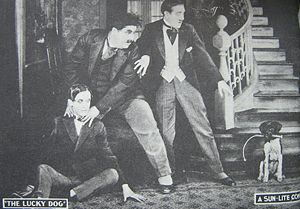
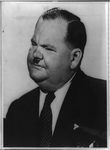
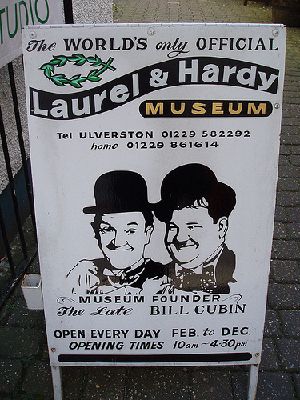
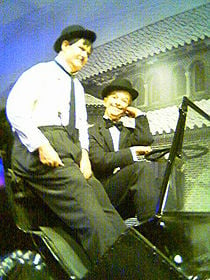
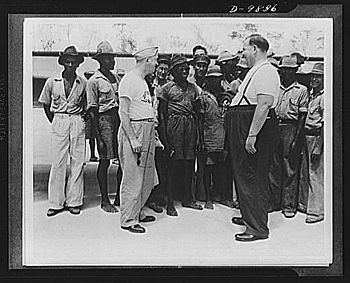
 KSF
KSF